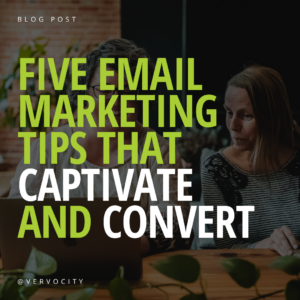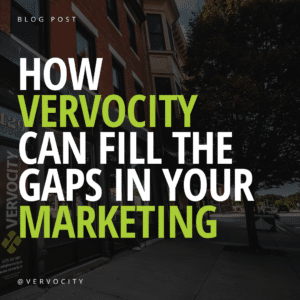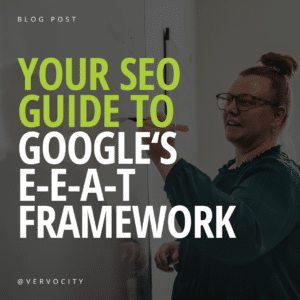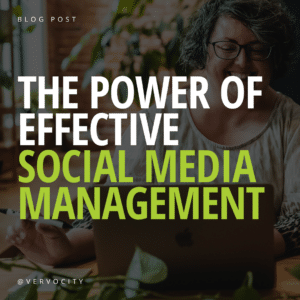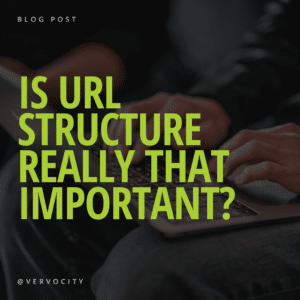Are you tired of seeing your competitors outrank you in search engine rankings? Do you feel like you’re missing out on valuable online traffic?
Search Engine Optimization (SEO) blog posts are created to boost your website’s customer-focused content and website rank. You know what they say: “Google it.” And we do – all the time. We rely on search engines when we want to instantly find or know more information. That’s why it’s important for your business to have a solid online presence.
Let’s look into how SEO-driven blogs can help your website rank higher in search engine results, attract more leads, and establish credibility for your brand within your industry.
Why Establish an SEO-Driven Blog?
An SEO-driven business blog can positively impact your website’s search engine rankings.
Search engines, like Google, are designed to crawl through your site and look for relevant keywords, phrases, and information related to your industry. The latest Google Search Core Updates also stress the importance of providing valuable content to your customers. As the algorithm continuously adapts with artificial intelligence (AI), high-quality content is prioritized to give customers a more precise answer to what they’re looking for.
Experiment with Different Blog Post Formats
Regularly publishing blog posts tells search engines that your website is active, fresh, and should be considered in relevant searches. Blog posts provide an opportunity to inform your customers on various topics and updates, including:
- Company News
- Industry Trends
- How-To Guides
- Product or Service Updates
- Listicles (Top 10 Ways to)
- Frequently Asked Questions
- Interviews
- Review and Comparisons
- Opinion Pieces
- Evergreen Content (Posts that provide timeless value to readers and remain relevant beyond their publication date)
Benefits of SEO Blog Posts
Blog posts, in general, provide various benefits for your website, but SEO-driven posts are specifically written to help customers find your content. Here are some of the benefits of using SEO to attract readers:
1. Boosts Search Ranking
A higher rank in search engine results gives your website more online visibility. Websites that don’t appear until the second page of search results significantly miss out on traffic.
According to SMA Marketing, approximately 75% of people don’t scroll past the first page of search engine result pages. That statistic alone highlights the importance of creating content that shows up for customers.
Search engines love updated and relevant content. Posting regularly shows Google that your site is active and up-to-date. Search engines will see the value in your content and pass that value to your readers. Blog posts allow you to provide information to your audience that otherwise wouldn’t be available on your website. Not every piece of valuable content can be published as a main page (you’d have WAY too many pages), so articles and posts effectively provide additional information while keeping your audience and search engines updated.
2. Builds Authority
It’s not enough to just have a website anymore. Customers want to know who they are buying from. People want to buy products and services from businesses they trust.
Blogs provide a platform to share your industry knowledge, insights, and opinions. Establish your brand as a thought leader within your industry by publishing high-quality, informative, and educational content. Use the content to build customer loyalty and position your business as a go-to source for information.
Blog posts also build website authority by helping to reduce bounce rates. A bounce rate is a metric that measures the percentage of visitors who enter your site and then leave (“bounce”) rather than continuing to view other pages within the same site. Visitors are more likely to stay on your site longer when engaging posts offer valuable information. Search engines interpret lower bounce rates as a sign of a quality site, which can positively impact your ranking.
3. Creates Shareable Content
Shareable content is king in a world of social media and instant gratification. Blogging allows people to create content that people are interested in sharing on social media. Use social media to introduce your company to a wider audience and create a buzz around your brand.
Shareable content also provides an opportunity for customer engagement. Research what people say about your brand and engage with their experiences. Show your customers that they’re part of a conversation so they know you are investing in them. Create a more positive experience with your brand by responding to people who are interested. Positive experiences lead to strong brand reputation, and strong brand reputation leads to more business opportunities.
4. Stays Top of Mind
Blog posts consistently put your business in front of your audience. Even if they don’t need your product or service right now, staying top-of-mind increases the chances that they’ll think of you when they do. Plus, if you’re providing them with valuable content (e.g., tips and tricks, industry news, behind-the-scenes glimpses of your business), they’ll begin to see you as a resource, not just a business.
5. Generates Leads
Blogging can be a lead-generating machine.
Effective SEO blog posts do more than make you look good in the eyes of search engines. They give you a chance to capture leads and turn them into customers. By including calls to action, such as guiding customers to sign up for a newsletter or make a purchase, you can encourage readers to take that next step and engage with your business.
How to Boost Your Website Rank with SEO Blog Posts
The higher your website ranks, the more likely prospects are to find your business and complete a conversion on your site. Here are several ways to use SEO-driven blog posts to improve a website’s rank and online visibility significantly.
1. Identify Your Target Audience
The first step in creating SEO-driven blog posts is understanding your target audience.
Who are the people interested in your products or services? What keywords are they using to search for related content? Evaluate their needs, pain points, and search intent to identify relevant topics and keywords. Narrow your audience to your specific customer or user persona, and be clear about who you’re trying to target.
Once you have a list of topics and keywords, put them into a content calendar to help you stay organized.
DO NOT: Create generalized content that doesn’t target readers within your niche.
2. Conduct Keyword Research
Keyword research identifies keywords and phrases people use to search for information online.
Use a keyword research tool like Ahrefs, Google Keyword Planner, Moz, or SEMRush to generate a list of relevant keywords and phrases within your industry. Consider long-tail keywords that are more specific and have a lower competition rate. Long-tail keywords are usually four to five-word phrases that capture your audience’s intent. For example, instead of focusing on a generic keyword phrase like “organic skincare,” use long-tail keywords like “best organic skin care for acne.”
It’s important to remember not to stuff your blog post with keywords – Google will penalize you for it. Instead, optimize your blog post with a mix of primary and secondary keywords (most important and second most important), and ensure the content is readable and engaging. Try to target only one to three keywords or phrases per post.
DO NOT: Use too many various keywords or stuff your content with multiple uses of the same keywords or phrases.
3. Optimize On-Page SEO Elements
On-page SEO refers to optimizing individual web pages to rank higher and earn more relevant traffic. Each blog post should be SEO-focused and written with content and on-page factors.
On-page SEO elements include meta tags, URL structure, header tags, internal linking, and image optimization. Ensure the meta title and description tags contain your primary keyword and encourage users to click on your link. Search engines show the post’s meta title and description within search engine results. Here is an example of one from one of our recent posts:

Also, ensure your URL is short and descriptive, your header tags (H1, H2, H3) reflect the hierarchy of headings, and your internal links connect to relevant content on your website. Images are important for user experience, so optimize them by compressing them for faster loading times, adding alt tags, and reducing file sizes.
DO NOT: Forget to optimize every part of your post, from image size to search engine display.
4. Encourage Backlinks and Social Shares
Backlinks are links from other websites that lead to your website. The more high-quality backlinks you have, the more authoritative your website appears to search engines.
Create valuable, informative, and shareable content that naturally encourages other websites to link back to your website. Share your blog post on social media platforms to increase social shares and website links.
DO NOT: Pay for backlinks to build site authority falsely.
Conclusion
SEO-driven blog posts are a powerful tool for boosting your website’s rank, organic traffic, and potential leads. The best part? You don’t have to wait to get started.
We know that writing optimized blog posts can be a tricky balance between entertaining your readers and appeasing the algorithms. Vervocity’s team of experienced copywriters can work with you to develop a content strategy tailored to your business and your audience. Plus, we’ll handle all the writing so you can focus on running your business.
Contact us today to learn more!



